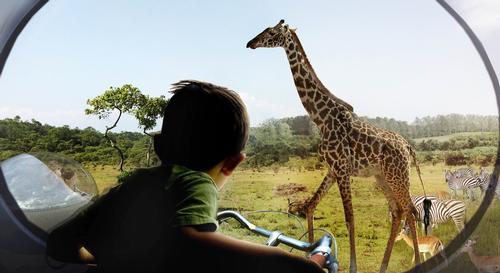05 Aug 2015
Exclusive: Bjarke Ingels on how he's turning the traditional zoo inside-out with cageless concept
BY Tom Anstey

Bjarke Ingels has said that his upcoming zoo project in Givskud, Denmark, will completely reimagine the traditional format, doing away with cages and revolutionising the relationship between the zoo’s visitors and its inhabitants.
Ingels, founding architect of his own practice, BIG, created designs for Denmark’s Zootopia – a hybrid of a traditional zoo and a safari based on the concept of a completely cageless experience.
“Essentially the idea is to interface with animals in completely new ways,” said Ingels speaking exclusively to Attractions Management. “What we’ve tried to do is eliminate all traces of human architecture, so there are no buildings. This means no Chinese pagodas or African huts. Instead you’ll see rolling hills growing over the areas where the animals retreat when winter comes in Denmark; combinations of level changes; and trenches with water where the depth prevents certain animals from crossing.”
On entering the 1,200,000sq m (3,937,007sq ft) Zootopia, visitors will arrive in a central plaza resembling a giant crater. Visitors will be able to walk along the rim of this crater and get views out across the Zootopia landscape, which is divided up into three zones: America, Asia and Africa. Each region will offer different methods of exploration, starting in Asia where guests can travel on water, cycle through the Africa area and then take a cable car through America. There will also be the option of taking a 4km (2.5m) hike through all three continents.
“The zoo’s aim was really to try to be a place where visitors don’t notice the barriers between them and the animals, turning the traditional zoo inside-out,” continued Ingels.
“Zootopia will only have social animals. A lot of people associate zoos with lonesome animals in small cages, all going crazy from boredom and claustrophobia. When you have a social zoo however, you can have a big group of animals together in a habitat that resembles the way they would live in the wild. In this case, the brief created a natural starting point for our design; the continuous and diverse landscape seamlessly serves animal and human needs.”
The first phase is expected to be completed in 2019 to coincide with the park's 50th anniversary. For more from Bjarke Ingels, an exclusive interview will be available in the Q3 2015 edition of Attractions Management, out next week.
Close Window